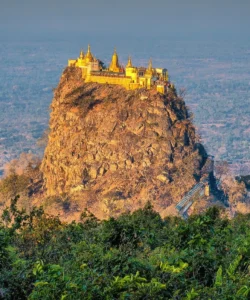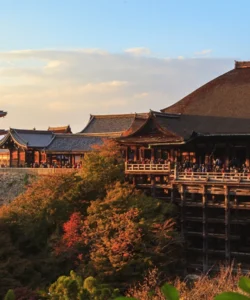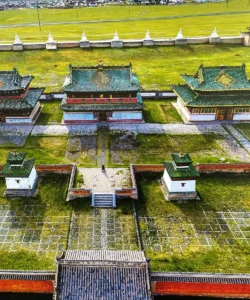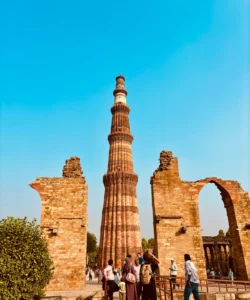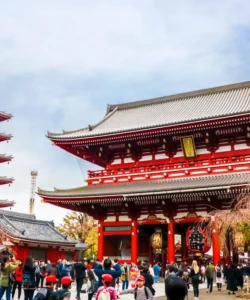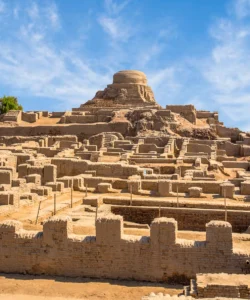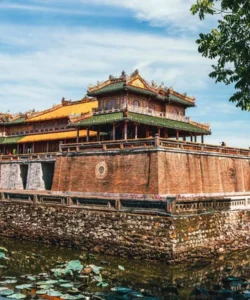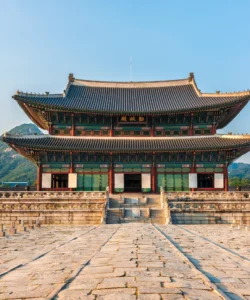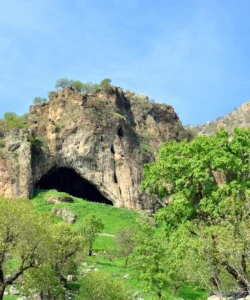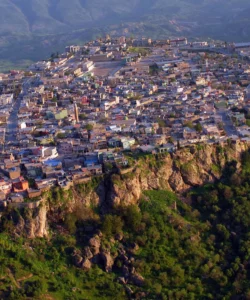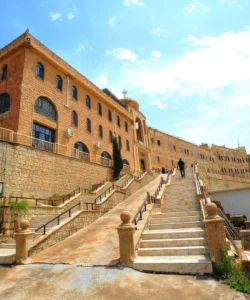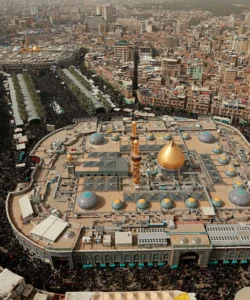The Ashur Ruins, also known as Qal’at Sherqat, are the remains of the ancient city of Ashur, located in northern Iraq. This archaeological site is of immense historical and cultural importance as it was the original capital of the Assyrian Empire and the religious heart of the Assyrian people. The site offers a glimpse into a powerful civilization that dominated the Near East for centuries.
Name: Ashur Ruins (Arabic: آشور, Āshūr; also Qal’at Sherqat)
Address: The ruins are located on the west bank of the Tigris River in the Saladin Governorate of northern Iraq, approximately 97 kilometers (60 miles) south of Mosul.
How to Get There:
Travel to the Ashur Ruins is currently extremely difficult and unsafe for general tourism due to political instability and security concerns in Iraq. The site has been affected by conflict and is in a remote area. The following information is for historical context and is not a recommendation for travel.
- By Air: The closest international airport would be Baghdad International Airport (BGW). From Baghdad, a road trip would be required to reach the site.
- By Road: In more stable times, the site was accessible by road from nearby towns. However, the region has been a focal point of conflict.
- UNESCO efforts: The site is a UNESCO World Heritage site, and efforts have been made by international organizations to protect it.
Landscape and Architecture:
The Ashur Ruins are a sprawling complex of temples, palaces, and fortifications that were built and rebuilt over thousands of years on a naturally fortified bluff overlooking the Tigris River.
- UNESCO World Heritage Site: The site was inscribed on the UNESCO World Heritage List in 2003 and, due to its fragile state and proximity to conflict, was simultaneously placed on the List of World Heritage in Danger.
- Strategic Location: The city was built on a rocky, wedge-shaped outcrop that forced the Tigris River into a sharp bend, creating a naturally defensible position with a wide view over the valley.
- Temple of Ashur: As the religious capital, the city was dominated by the Temple of Ashur, dedicated to the national god of the Assyrians. This monumental temple, along with a prominent ziggurat, was the spiritual heart of the empire.
- Ziggurats: The ruins feature the remains of three ziggurats, including the impressive ziggurat of the god Ashur. These mud-brick pyramids were monumental, stepped platforms that served as the base for the temples.
- Royal Palaces: The site contains the remains of several royal palaces, including the “Old Palace,” which was the residence of early Assyrian kings. These palaces were the administrative and political centers of the empire.
- Defensive Walls: The city was encircled by massive mud-brick fortification walls, which were improved and strengthened by various kings. The remnants of these walls are still visible today.
- Multi-Period Site: The ruins provide an outstanding record of the evolution of building practices from the Sumerian and Akkadian periods through the Assyrian Empire, as well as a short revival during the Parthian era. Archaeological excavations have uncovered layers of history, including temples, palaces, and private houses.
- Destruction and Rediscovery: The city was largely destroyed by a coalition of Babylonians and Medes in 614 BCE. While it was later revived, it was eventually abandoned. The first scientific excavations of the site were conducted by a German team in the early 20th century.
What Makes It Famous:
- Original Capital of the Assyrian Empire: Ashur is famous as the first capital of the Assyrian Empire, a powerful civilization that played a pivotal role in the history of the ancient Near East.
- Religious Capital: It was the sacred religious center of the Assyrians, the cult center of the god Ashur (from whom the country, the city, and the god all took their name). It was the site of the crowning and burial of the Assyrian kings, even after the political capital was moved to other cities like Nineveh.
- Archaeological Multi-Period Site: The site is one of the few archaeological sites of its kind in Assyria to provide a rich and layered record of history, with evidence of occupation dating back to the 3rd millennium BC.
- Historical Significance: Ashur played a crucial role as a major hub for trade and a significant cultural center on a caravan route that ran through Mesopotamia.
- Symbol of a Lost Civilization: The ruins stand as a powerful symbol of the rise and fall of the Assyrian Empire, a testament to its grandeur and a haunting reminder of its destruction.
Differences from Some Other Wonders:
- Religious and Political Duality: A unique feature of Ashur is its dual role as the first political capital and the permanent religious capital of the Assyrian Empire. Even when the political seat of power moved, Ashur’s sanctity as the burial ground of kings remained.
- Focus on Foundational History: Unlike later Assyrian cities like Nineveh or Nimrud, which are famous for the grandeur of the Neo-Assyrian Empire, Ashur’s fame is rooted in its status as the foundational city of the empire, where the Assyrian dynasty and identity began.
- Long Historical Timeline: The site’s history is incredibly long, dating back to the 3rd millennium BC, a timeline that predates and encompasses its role as the Assyrian capital.
- Vulnerability to Conflict: Its inclusion on the List of World Heritage in Danger, due to its fragile state and the threat of conflict and looting, is a defining and tragic part of its modern identity, a narrative that sets it apart from many other historical sites.
- Mud-Brick Construction: The use of mud-brick for many of its monumental structures, like the ziggurats and defensive walls, is a key architectural feature that distinguishes it from stone-built wonders and highlights a specific regional building tradition.
Ashur Ruins Photos:
















